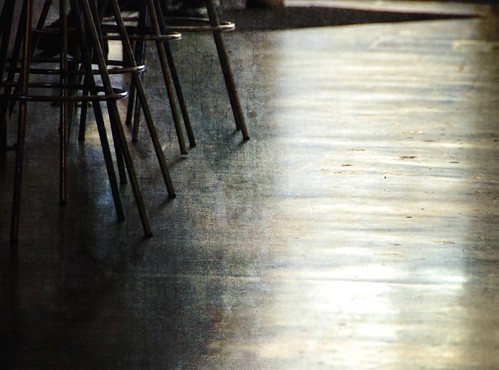 Evidence-based. Evidence-informed. Best evidence. These are just a few of the catch phrases that litter the medical community these days. For every phrase, there is probably at least one analogy to best describe it. Perhaps the one that is most bothersome and annoying is that which is used for "evidence-based practice": the three-legged stool.
Evidence-based. Evidence-informed. Best evidence. These are just a few of the catch phrases that litter the medical community these days. For every phrase, there is probably at least one analogy to best describe it. Perhaps the one that is most bothersome and annoying is that which is used for "evidence-based practice": the three-legged stool.
If you aren't familiar with it, the evidence-based practice stool stands on three legs. Each is considered to be equally important. The legs are best available research evidence, clinical expertise, and the patient's values, needs and preferences.
So how could I not support a model of evidence-based practice such as this? How could I become annoyed with such an analogy?
Evidence-based practice doesn't exist in a vacuum. There is no three-legged stool that functions optimally, in any office or home, unless it has a sound foundation upon which to place those three legs. That is the part that is readily forgotten.
Sure, we can make clinical decisions based on the best available research evidence - though the evidence is only as good as the study design. Buyer beware. We can emphasize the value and importance of countless years of clinical experience - let's just not use that as the primary means of validating a treatment intervention. Buyer beware - again. And of course we need to listen to the patient's values and preferences - though I think that it needs to be an "active" involvement on their part.
All well and good.
But the one area in which the stool is lacking is the floor upon which it rests. If you build a house on quicksand, we all know the results. The same is true if we put that three-legged stool on an unstable surface or a perilous foundation.
All is not lost: we can build a solid foundation given three key factors:
Scientific Plausibility: Does the treatment phenomenon proposed actually obey the laws of physics and have the scientific potential to exist in the world as we know it? I know that my chi is probably a little crooked, but so what? I was once told that using a foam roller created "elasticity" in the tissues; I am just not sure that science (nor collagen) would agree. If it doesn't obey science, then "Clinical Expertise" just isn't good enough - so put it to rest, please.
Anatomic Plausibility: Does the theory hold when you look at it from an anatomical perspective? My shifting cranial sutures demand anatomic plausibility. And then there is the iliotibial band. Are you really able to stretch this? Can you do so with one set of three 30 to 60 second stretches of dense connective tissue oh, every couple of days or before and after activity? Hell no. Don't believe me? Get into an anatomy laboratory at your nearest university and grab one - then let me know what you think.
Critical Thinking: Critical thinking and clinical reasoning are founded on an adherence to the scientific method. Beliefs must be left at the door. Please, no maintaining of contradictions based on logical fallacies. For example, we have plenty of data to confirm that the inter-rater reliability of many manual techniques - including palpation - is horrendous. Yes, we've had it for decades. Yet we continue to allow ourselves the liberty of using these tools repeatedly to "confirm" a diagnosis.
That three-legged stool of evidence-based practice is only as good as the foundation upon which we rest it. So let's get back to science and build a foundation that will truly support that stool. If we do, the stool can - and will - stand tall on its own.
Photo credits: Jesse.Millan
 "Running Injuries: Etiology And Recovery- Based Treatment" (co-author Bridget Clark, PT) appears in the third edition and fourth editions of "Clinical Orthopaedic Rehabilitation: A Team Approach" by Charles Giangarra, MD and Robert C. Manske, PT.
"Running Injuries: Etiology And Recovery- Based Treatment" (co-author Bridget Clark, PT) appears in the third edition and fourth editions of "Clinical Orthopaedic Rehabilitation: A Team Approach" by Charles Giangarra, MD and Robert C. Manske, PT.
 Allan Besselink, PT, DPT, Ph.D., Dip.MDT has a unique voice in the world of sports, education, and health care. Read more about Allan here.
Allan Besselink, PT, DPT, Ph.D., Dip.MDT has a unique voice in the world of sports, education, and health care. Read more about Allan here.
 Top 5 finalist in three categories: "Best Overall Blog", "Best PT Blog" and "Best Advocacy Blog".
Top 5 finalist in three categories: "Best Overall Blog", "Best PT Blog" and "Best Advocacy Blog".